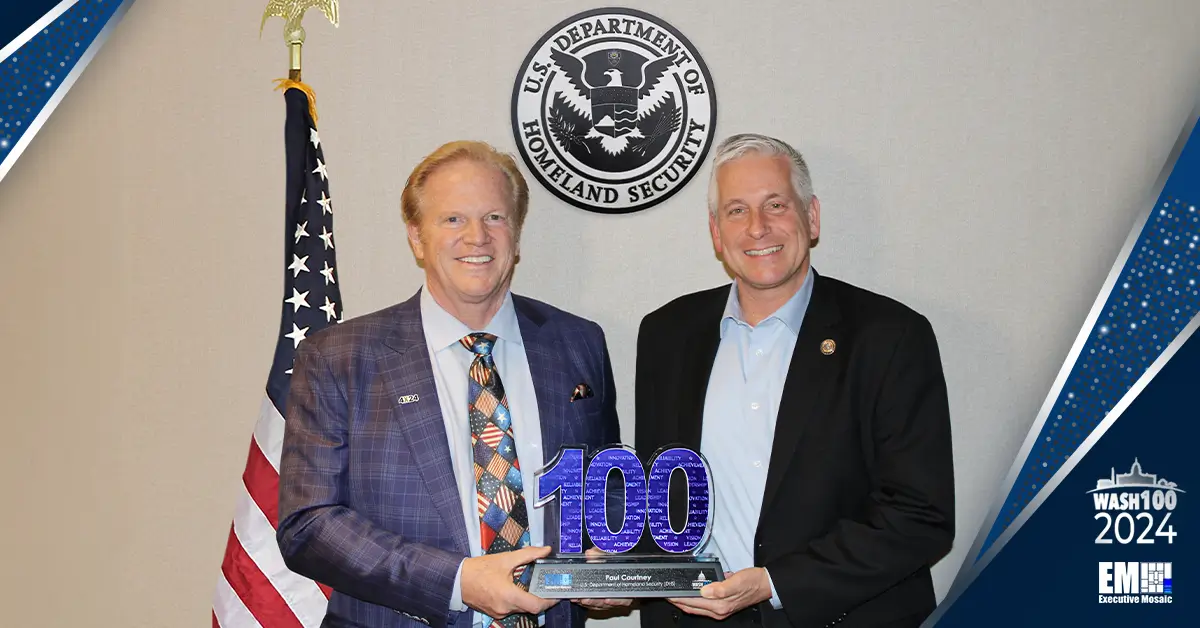Throughout the past several years, the U.S. Army has continued to implement advanced technology priorities, from enhancing hardware, software, and infrastructure to expanding synthetic training environments, to improve the service branch’s acquisition and modernization processes. The Army has employed agile, responsive cross-functional teams to achieve its modernization goals and efforts.
In order to address the evolving defense priorities, Potomac Officers Club will host its 5th Annual Army Forum on Aug. 27th, where notable federal and industry leaders will discuss the progress, innovations and accomplishments of the Army’s modernization renaissance over the last year, what challenges remain, and how industry can help in 2021 and beyond.
Click here to register for Potomac Officers Club’s 5th Annual Army Forum.
This event will feature Bruce Jette, assistant secretary of the U.S. Army for acquisition, logistics and technology and a 2020 Wash100 Award recipient, as keynote speaker. The Army Forum will also host a panel, featuring notable defense experts. Of them, Anthony Potts, program executive officer with the U.S. Army, will serve as a panelist.
The speakers will expand on the challenges facing federal agencies, businesses and government contractors as the warfare environment continues to evolve.

Army Modernization Priorities
The U.S. Army released its Modernization Strategy in Oct. 2019, that has established six material modernization priorities, including Long Range Precision Fires, Next Generation of Combat Vehicles, Future Vertical Lift, Army Network, Air and Missile Defense and Soldier Lethality.
The strategy has covered new priorities that will continue to be developed from 2020 to 2035. It was developed to transform the Army to enable the service branch to conduct Multi-Domain Operations (MDO) which are intended to address the current and future actions of competitors Russia and China.
The Army’s Modernization Strategy is part of a hierarchy of strategies designed to inform the Service’s respective modernization plans, such as the National Security Strategy (NSS), the National Defense Strategy (NDS), the National Military Strategy (NMS), and the Army Strategy.
In order to achieve its modernization priorities, the Army developed Army Futures Command (AFC) in 2018 to modernize the service branch for the future-will integrate the future operational environment, threat, and technologies to develop and deliver future force requirements, designing future force organizations, and delivering materiel capabilities.
According to the Army’s 2019 Modernization Strategy, “modernization is a continuous process requiring collaboration across the entire Army, and AFC brings unity of effort to the Army’s modernization approach. AFC… develops and delivers future concepts, requirements, and organizational designs based on its assessment of the future operating environment.”
Army and AI Integration
Artificial intelligence (AI) has enabled the Army to process higher volumes of data, and delivery of analysis in shorter time frames. AI-driven capabilities have continued to grow to improve the tactical edge within defense and warfare.
Jette recently noted that the Army has begun to integrate AI to perform tasks like combat decisions and has worked with the industry to further develop battlefield AI’s ability to enhance the warfighter’s situational awareness.
The service branch will include AI into various applications within the future battlefield. Automation has been linked with human counterparts all the way down to the deployed warfighter. AI has made warfighters more effective, lethal and better able to overmatch threats; however, there are still technical challenges that need to be addressed.
“Algorithmic investment, machine learning, big data, uncertain data, and the time scales at which everyone expects solutions to hard problems,” RADM David Hahn stated, were all areas that needed to be further developed for battlefield AI to really function at the tactical edge.
Jette added that while there are challenges to overcome, “the potential that battlefield AI applications hold is profound and represents a key effort in the military’s efforts to maintain its technical overmatch against its peer and near-peer competitor states.”
Army and Cyber Warfare
The Army Cyber Institute has reported that advanced technology such as doctored videos and artificial intelligence could be weaponized by foreign adversaries in the near future. To combat the potential threats, the Army has announced it will launch a new company-level unit in fiscal 2021 to support information warfare efforts under the 915th Cyber Warfare Battalion (CWB).
“The 915 CWB provides Army Cyber Command insight on how to integrate and support cyber and electronic warfare operations from the Brigade to Army Service Component Command echelons,” Lt. Col. Matt Davis.
The newly developed forces have represented the tactical manifestation of the Army information warfare sphere, with expeditionary cyber teams conducting local cyber and radio frequency-enabled operations. The 915th has already activated the first expeditionary cyber team and will add to that in the next year.
Army Modernization Funding
The Army announced in June 2020 that the service branch will begin a yearlong economic study to better predict tech modernization needs. Jette said the Army has been working on a “holistic economic model” that extends beyond the current two-year budget planning cycle.
The traditional model could impede modernization efforts. The new model will determine how long capabilities last. “One of the things we’re trying to do is say what is the lifecycle of a particular capability, how does that fit together, how does that remain affordable in the long term,” Jette added.
Jette said the economic study, which would coincide with the Army’s zero-budgeting night court process, should be able to give the service more insight into when technology modernization can be delivered and how the capability, and its cost, affects readiness.
Defense officials have previously reported that rigid budget cycles hinder technological advances and pose an increasing concern as future defense budgets.

Join Potomac Officers Club for the 5th Annual Army Forum to learn more about the latest initiatives and modernization plans for the U.S. Army. Do not miss this must-see opportunity to hear from notable leaders on modernization and innovation.
Click here to register for Potomac Officers Club’s 5th Annual Army Forum.







